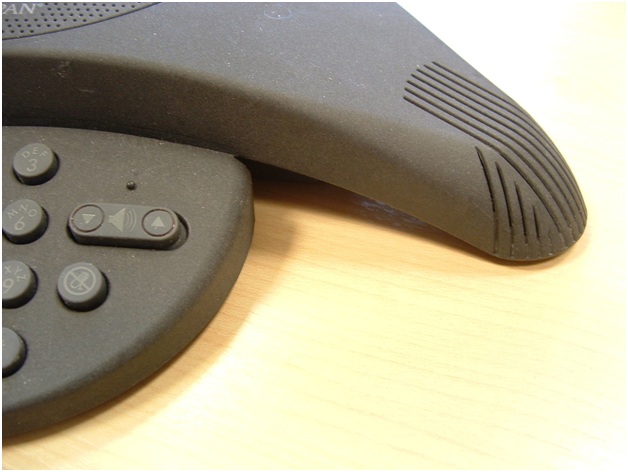Voice over IP (VoIP) has changed the communication landscape for other individuals and businesses. You can communicate effectively online without worrying about getting disconnected or having a poor signal. If you have high speed internet access, VoIP conference is another tool you can add to your arsenal to help you work more efficiently.
When you have the capability to use conference calling with VoIP, you just have to find out how it best fits into your communication strategy and organizational needs. If you don’t have that capability, seek out an advisory service like GetVoIP that may be able to find you a better VoIP provider.
Audio or Video?
Conference calls aren’t just talking. You can choose to do them with audio only or some sort of video connection. Video chatting refers to anything using video in any capacity, including camera-activated chats, screen sharing, and presentations with voice-over.
Both audio and video have their uses, but they’re not always useful in the same contexts. Audio is great, unless a visual aid would help speed up understanding or allow participants to see reactions as they share new information and ideas. Video is often useful, but sometimes uncomfortable and unnecessary.
Whichever you favor, here are a few tips on how to use VoIP conference calls.
Conference Calls for Remote Team Management
The beauty of working remotely is you don’t need to commute to work. Unfortunately, it’s always a challenge to keep a team of remote workers connected enough to run a project smoothly. Communication can be an issue. Conference calls make it easier to maintain team collaboration and communication over long stretches of time.
Using an audio or video VoIP software, you can easily make conference calls for free or very cheaply, allowing you to communicate with a remote team regularly. Set up consistent meeting times to share ideas, give progress updates, and re-connect with each other. If no visual aids are necessary, relieve the pressure and stick to audio calls.
Get Immediate Feedback on Work in Progress
When you’re collaborating with people in multiple locations, or if you’re working with some remote employees, you may need to use VoIP service to facilitate the feedback process. Start a video conference to show something you’re working on and get immediate visual and audio feedback from the other party. You’ll get better and quicker feedback doing this than you would over email.
Perform Video Interviews & Recruiting Sessions
In the early stages of recruiting, video interviews are a great way to save time and money. Once you’ve narrowed down candidates, you can select the ones you’re most interested in and ask them to join you in a video interview. Only include relevant parties, such as other hiring managers if applicable.
For recruiters that are drawing applicants from around the country or region, video interviews make a lot of sense for both parties. If you’re hiring in the immediate local area, it doesn’t make as much sense. You could stick to an audio interview, but video interviews give you a more complete picture of the person. As the hiring process progresses, an in-person interview might be the best follow-up after a video interview.
Make sure you’re following some guidelines to keep the interview moving forward well, or things could just be awkward.
Give Informative Webinars
Some VoIP providers allow people to participate in video or audio conferences without having to contribute their own video or audio. While there are other software and app options for webinars, VoIP conference calling can be a useful way to host webinars internally for employees, clients, vendors, etc.
Start a Video Help Desk
Problem solving and customer service are always difficult. But, some customer service is more difficult because of the lack of visual aids to help the agent understand the situation fully. Tech support and IT are classic examples. The person calling to seek help may not fully understand what’s wrong and may not be able to explain well.
With a video help desk, customers can often get answers more quickly and help desk staff can take care of more issues in a space of time. Customers may still prefer to stick to direct calling, but having the video option available for those who want it may be a great advantage in some fields.
Conduct Investor Pitch Meetings & Presentations
This is probably the most controversial use on this list. There’s constant debate about whether VoIP services have a place in pitch meetings and any kind of sales presentations. The argument against their use is that nothing can replace that initial face-to-face meeting when it comes to building trust.
However, face-to-face meetings aren’t always possible. If you’re courting investors from around the country, you may not be able to get them all together for a meeting with you, but you could probably schedule them for a video conference. It’s common practice in many investment sectors, especially while the investor is still doing their due diligence to explore a new deal.
For sales pitches, many people prefer face-to-face meetings in the beginning. It can assist in building trust between your company and a new lead or client. Even if conference calling isn’t appropriate for the initial meeting, it’s a great tool for following up with clients and continuing the relationship.
VoIP phones have enabled better communication in many businesses across different industries. No matter what space you work in, VoIP conference calls most likely have some sort of useful application. As long as you invest in a VoIP software that has the capabilities you need, there are no real limits to what you can and can’t use conferencing calling to accomplish.

